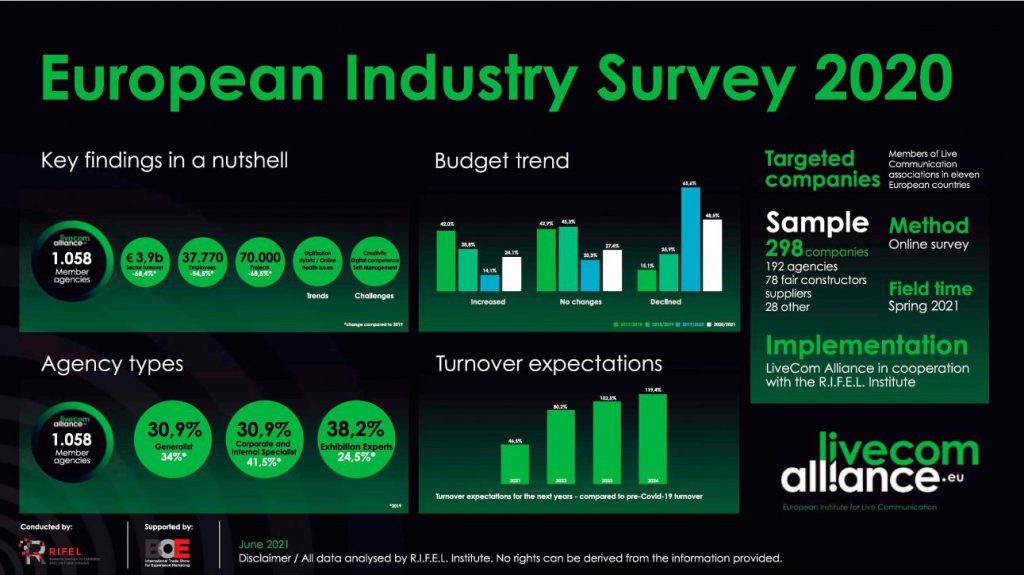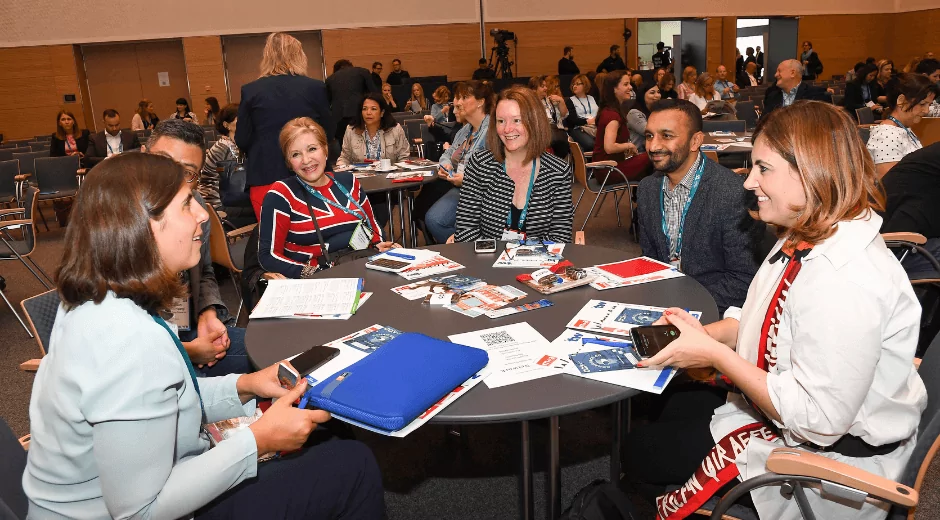A report analyzes how European agencies have adapted

Share news
Listen
This study was conducted by the renowned German R.I.F.E.L. Institute, based on a sample of 298 companies representative of a total of 1.058 live-communication companies and agencies, totalling 37,000 employees and more tan 3bn euros of activity. All these members are united in the twelve national associations united in LiveCom Alliance (AEVEA is the Spanish member).
Industry hit hard. It will be no surprise that activity has been cut drastically: figures attest to a substantial decrease in comparison to 2019 in turnover (-68.4%), projects (-68.5%) and employment (-54.5%). And since early 2020 was pretty good, you can imagine the damage in the activity for the last 9 months of 2020.
Government support. Maybe it was not enough (we all complained about the lack of aid on this battered industry), but it sure helped: the report states that “the industry gratefully leaned on the government-support: 85% of the companies made use of support instruments provided, and on average, 37.6% of the losses were offset by state aid”. As far as industry employment goes, the solutions used combined government-funded short-time-work (ERTE in Spain, for 76% of agencies) and working from home (50%).
Digitization and agility, to adapt to this brave new world. The study differentiates three main types of agencies: generalists, corporate & internal specialists and exhibition & public experts… but this year the lines have been blurred. Compared to 2019, “there were shifts in the share and activity profiles of the member clusters”, the report says, as agencies have adapted to what was maintained in terms of communication activity (especially online events). But the industry could come back stronger: “the sector has invested heavily in the intensification of customer relationships, the implementation of digital formats and managerial agility”. Close to your clients and understanding them better will make agencies better consultants.Integrating digital formats will broaden the range of services to be offered. And agility is more important than ever in a VUCA world.
Key challenges. The survey is not only a comparison to 2019, but also a preparation for a restart of our industry. “The industry showed resilience, creativity, entrepreneurship and created opportunities”. When it comes to the trends that will remain relevant after the pandemic, respondents emphasize (of course!) the roles of digitization and online/hybrid event formats. Health aspects and sustainability also remain important. Looking to the future, creativity, digital competence and self-management competence are perceived to be the most important individual skills. And this will require still some adaptation from the teams, since agencies perceive gaps in their employees’ skills, in digitalization, in ‘new working’ (new thinking, digital culture and open-mindedness).
The full report offers insights and data that benchmark the European live-communication industry. It publishes figures on agency payroll breakdown, turnover breakdowns, freelancer rates and clients’ forecasting insights. The complete report is available through this link.










